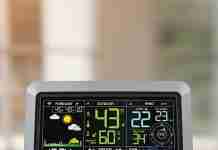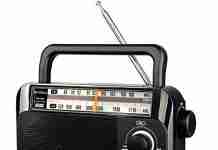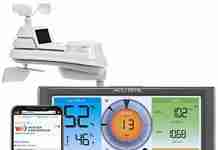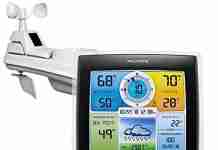Are you struggling to connect your home weather station to your devices? In this handy guide, we will provide you with the necessary steps to troubleshoot any connectivity issues you may be facing. Whether you’re experiencing trouble with your Wi-Fi connection or struggling to connect to the accompanying app, we’ve got you covered. Stay tuned to discover the solutions that will have your home weather station up and running in no time!
Review contents
Common Causes of Connectivity Issues
Connectivity issues with a home weather station can be frustrating, but understanding the common causes can help us effectively troubleshoot and resolve the problem. Here are some of the most common factors that can contribute to connectivity issues:
Interference from other devices
One of the main reasons for connectivity issues is interference from other devices. Since many electronic devices operate on similar frequencies as weather stations, they can disrupt the wireless signals and cause connection problems. Devices such as cordless phones, microwaves, and baby monitors are known to generate interference. To mitigate this issue, we need to identify potential sources of interference and ensure that the weather station is placed away from these devices. Using shielded cables can also help minimize interference.
Weak Wi-Fi signal
A weak Wi-Fi signal can significantly impact the connectivity of our weather station. The distance between the weather station and the router, as well as physical obstacles like walls or other structures, can weaken the signal strength. In such cases, it is essential to check the router settings, reposition the router if needed, or consider using Wi-Fi extenders or repeaters to enhance the signal reach.
Outdated firmware
Outdated firmware can affect the functionality and connectivity of our weather station. Manufacturers frequently release firmware updates to address bugs, improve performance, and enhance compatibility with other devices. By checking for firmware updates regularly and updating the firmware as necessary, we can ensure that our weather station operates at its best and maintains a stable connection.
Incorrect placement of sensors
The placement of sensors plays a crucial role in the accuracy and connectivity of a home weather station. If the sensors are not properly positioned, obstacles such as walls or large metal objects can interfere with the wireless signals, leading to connectivity issues. It is essential to consult the installation guide provided by the manufacturer and reposition the sensors accordingly. Additionally, ensuring a clear line of sight for wireless signals can also help improve connectivity.
Power supply issues
Power supply problems can also contribute to connectivity issues. Faulty power cables or connections can disrupt the operation of the weather station and affect the transmission of data. In such cases, we must carefully inspect the power cables and connections, ensuring they are securely plugged in. If necessary, replacing batteries or power adapters can also help resolve power-related connectivity issues. Alternatively, exploring options for powering the weather station through alternate sources, such as solar power, may be considered.
Troubleshooting Steps
Now that we are familiar with the common causes of connectivity issues, let’s explore some troubleshooting steps we can take to resolve them:
Checking device connections
The first step in troubleshooting connectivity issues is to check all the device connections. Inspect the cables and connectors, ensuring they are securely connected to the weather station and any additional components. Loose or damaged connections can hinder the transmission of data and cause connectivity problems. If any connections appear to be loose, reseating them firmly can help eliminate the issue. Additionally, power cycling the device by turning it off and on again can sometimes resolve connectivity problems as well.
Testing the Wi-Fi signal strength
To diagnose a weak Wi-Fi signal as the cause of connectivity issues, it is essential to test the signal strength. We can use a Wi-Fi analyzer app or a simple signal strength meter to determine the quality of the signal received by the weather station. If the signal is weak, moving the weather station closer to the router can improve connectivity. In cases where physical obstruction is the primary cause of a weak signal, repositioning the router may also be helpful. If the Wi-Fi signal is heavily congested, switching to a less crowded channel can mitigate interference and boost connectivity.
Updating the firmware
If we suspect that the weather station’s firmware may be outdated, checking for firmware updates is essential. Manufacturers often release firmware updates to improve device performance and address connectivity issues. Using the manufacturer’s website or dedicated software, we can check for available updates and follow the provided instructions to update the firmware. Keeping the firmware up to date ensures that the weather station maintains compatibility with other devices and operates more efficiently.
Repositioning the sensors
As mentioned earlier, incorrect placement of sensors can lead to connectivity issues. By referring to the installation guide provided by the manufacturer, we can ensure that the sensors are positioned correctly. This may involve relocating the sensors to avoid obstacles or ensuring a clear line of sight between the weather station and the sensors. By repositioning the sensors in accordance with the manufacturer’s recommendations, we can eliminate connectivity problems caused by poor sensor placement.
Checking power supply
If power supply issues are suspected, a thorough inspection of power cables and connections is necessary. Loose or damaged power cables can disrupt the operation of the weather station and affect connectivity. By carefully examining the power cables and connections, ensuring they are securely plugged in, we can resolve power-related connectivity issues. If batteries power the weather station, replacing old or depleted batteries can restore connectivity. Alternatively, exploring solar power options may provide a more reliable and sustainable power source for the weather station.
Interference from Other Devices
Interference from other devices is a significant contributor to connectivity issues with home weather stations. Identifying potential sources of interference and implementing appropriate measures can help eliminate or minimize the impact of external devices. Here are some steps we can take to tackle interference issues:
Identifying potential sources of interference
To effectively address interference issues, we need to identify potential sources of interference. Cordless phones, microwaves, baby monitors, and other electronic devices can emit signals that overlap with the frequencies used by weather stations. By surveying the area around the weather station and locating such devices, we can determine possible sources of interference.
Moving devices away from the weather station
Once potential interference sources are identified, the next step is to move these devices away from the weather station. Increasing the distance between the weather station and the interfering devices can minimize the impact on connectivity. By relocating devices to different areas of the house or placing them farther from the weather station, we can reduce interference and improve the quality of wireless signals.
Using shielded cables
Shielded cables can help to mitigate interference caused by external devices. These cables are designed to reduce the effect of electromagnetic interference (EMI) and radio frequency interference (RFI). By using shielded cables to connect the components of the weather station, we can prevent outside signals from interfering with the data transmission. This can lead to a more stable connection and improved overall performance.
Weak Wi-Fi Signal
A weak Wi-Fi signal is a common culprit behind connectivity issues with home weather stations. Thankfully, there are several steps we can take to strengthen the signal and enhance connectivity:
Checking router settings
Before making any physical changes to the setup, it is important to check the router settings. Make sure that the router’s firmware is up to date, as outdated firmware can affect signal strength and connectivity. Additionally, reviewing the settings related to wireless signal strength, channel selection, and security protocols can help optimize the Wi-Fi network for better performance.
Repositioning the router
If the Wi-Fi signal strength remains weak even after checking the settings, repositioning the router may be necessary. Ideally, the router should be placed in a central location within the house to maximize coverage. Moving the router away from physical barriers like walls and metal objects can also help improve signal strength. Experimenting with different router placements and monitoring the signal strength can guide us in finding the optimal position for maximum coverage.
Using Wi-Fi extenders or repeaters
In cases where repositioning the router does not sufficiently improve the signal strength, using Wi-Fi extenders or repeaters can be an effective solution. These devices amplify the Wi-Fi signal, extending its reach to areas that were previously out of range. Wi-Fi extenders typically connect to the existing router and rebroadcast the signal, while repeaters pick up and amplify the original signal. By strategically placing these devices throughout the house, we can boost the Wi-Fi signal and ensure better connectivity for our weather station.
Outdated Firmware
Outdated firmware can impede the performance and connectivity of a home weather station. Keeping the firmware up to date is crucial for optimal operation and seamless connectivity. Here’s what we can do to address firmware-related issues:
Checking for firmware updates
To determine if the weather station’s firmware is outdated, we need to check for available updates. Manufacturers often provide firmware updates on their websites or through dedicated software. By visiting the manufacturer’s website, searching for the specific model of the weather station, and accessing the firmware section, we can find any available updates.
Updating the firmware
Once we have confirmed that updated firmware is available, the next step is to update the weather station’s firmware. Manufacturers typically provide detailed instructions on how to update the firmware. This may involve connecting the weather station to a computer via USB or utilizing over-the-air (OTA) updating if supported. Following the provided instructions carefully, we can successfully update the firmware, which can enhance connectivity and resolve any firmware-related issues.
Incorrect Placement of Sensors
Proper sensor placement is crucial for accurate data collection and uninterrupted connectivity of a home weather station. If the sensors are not positioned correctly, wireless signals may encounter obstacles, leading to connectivity problems. Here’s how we can address the issue of incorrect sensor placement:
Checking the installation guide
To ensure the sensors are placed correctly, we need to consult the installation guide provided by the manufacturer. The installation guide usually contains detailed instructions and recommendations for sensor placement. It may provide guidelines on the ideal orientation, recommended distance from obstacles, and other relevant factors to consider. By familiarizing ourselves with the installation guide, we can ensure that the sensors are correctly positioned for optimal performance and connectivity.
Repositioning the sensors
If the current placement of the sensors is hindering connectivity, repositioning them can help alleviate the problem. Moving the sensors to a location with a clear line of sight to the weather station can improve the wireless signal reception. Additionally, avoiding obstacles such as walls, large metal objects, or dense vegetation can help minimize signal interference. By carefully adjusting the sensor placement according to the manufacturer’s guidelines, we can resolve connectivity issues caused by incorrect sensor positioning.
Ensuring proper line of sight for wireless signals
In addition to addressing physical obstacles, ensuring a clear line of sight between the weather station and the sensors is crucial for reliable connectivity. Objects like buildings, trees, or even other household appliances can obstruct wireless signals and introduce connectivity problems. By strategically positioning the weather station and sensors to maintain an unobstructed line of sight, we can achieve a stronger and more consistent connection.
Power Supply Issues
Power supply issues can greatly impact the operation and connectivity of a home weather station. Certain problems related to power cables, connections, or battery life can disrupt the smooth transmission of data. Here’s what we can do to address power supply issues:
Checking power cables and connections
The first step in resolving power supply issues is to carefully inspect the power cables and connections of the weather station. Loose, damaged, or improperly connected power cables can interrupt the power flow and result in connectivity problems. By examining the cables for any signs of wear or damage and ensuring they are securely plugged into their respective ports, we can eliminate power-related issues and improve connectivity.
Replacing batteries or power adapters
If the weather station operates on batteries or has a separate power adapter, checking their condition is essential. Over time, batteries can become depleted or lose their capacity, affecting the performance and connectivity of the weather station. Similarly, power adapters may get damaged or become faulty, disrupting the power supply. By replacing old or depleted batteries and testing alternative power adapters if available, we can resolve power-related connectivity issues and restore the optimal functioning of the weather station.
Exploring solar panel integration for the weather station
To address power supply issues in a more sustainable and long-term manner, exploring solar panel integration for the weather station is worth considering. Solar panels can generate an independent power supply for the station, reducing reliance on batteries or traditional power sources. This can provide a more reliable and environmentally friendly solution while ensuring continuous connectivity. However, it is important to evaluate the power requirements of the weather station, calculate the necessary solar panel capacity, and ensure proper installation and maintenance to maximize the benefits of solar power integration.
Checking Device Connections
When troubleshooting connectivity issues with a home weather station, checking the device connections is crucial. Here are some steps we can take to ensure that all connections are secure:
Inspecting cables and connectors
Begin by visually inspecting the cables and connectors of the weather station. Look for any signs of damage, such as frayed or exposed wires. If any cables appear to be damaged, they should be replaced to ensure a reliable connection. Additionally, make sure there are no bent or broken pins on any connectors.
Ensuring secure connections
Once the cables and connectors have been inspected, confirm that all connections are secure. Gently tug on each cable to ensure they are firmly seated in their respective ports. If any connections feel loose, try unplugging and reinserting the cables to establish a more secure connection. Taking the time to double-check all the connections can go a long way in resolving connectivity issues.
Resetting the device
If checking the cables and connectors does not resolve the connectivity issue, a device reset may be necessary. Refer to the manufacturer’s instructions on how to perform a reset for the specific weather station model. Keep in mind that resetting the device will restore it to its default settings, so any customized configurations will be lost. After the reset, reconnect the weather station to the network and observe if the connectivity issue has been resolved.
Testing the Wi-Fi Signal Strength
To troubleshoot connectivity issues with a home weather station, it is important to assess the strength of the Wi-Fi signal. Here are some methods for testing the Wi-Fi signal strength:
Using a Wi-Fi analyzer app
There are various Wi-Fi analyzer apps available for smartphones and computers that can provide detailed information about the Wi-Fi signal strength. These apps typically display the signal strength, quality, and any nearby networks that may be causing interference. By using a Wi-Fi analyzer app, we can identify areas with weak signal coverage, helping us determine if connectivity issues are due to a poor Wi-Fi signal.
Moving the weather station closer to the router
If the Wi-Fi signal strength is weak, a simple solution is to move the weather station closer to the router. By reducing the distance between the two devices, the signal quality and strength tend to improve. Experiment with different locations and monitor the signal strength displayed by the weather station. Keep in mind any physical obstacles that may obstruct the Wi-Fi signal, such as walls or furniture, while selecting the new location.
Switching to a different Wi-Fi channel
If the Wi-Fi signal strength is consistently weak, even after moving the weather station closer to the router, interference from neighboring networks may be the cause. In such cases, switching to a different Wi-Fi channel can help mitigate the interference. Access the router settings and select a less crowded channel that is least affected by neighboring networks. This can improve the signal quality and reduce connectivity issues caused by Wi-Fi congestion.
Considering Solar Power Options
To address power supply issues and ensure uninterrupted connectivity for a home weather station, integrating solar power can be an excellent long-term solution. Here are some considerations when exploring solar power options:
Exploring solar panel integration for the weather station
Solar panel integration involves harnessing energy from the sun to power the weather station. By installing solar panels and connecting them to the weather station’s power system, a self-sufficient and sustainable power source is established. This reduces reliance on traditional power supplies and ensures continuous operation, even during power outages.
Calculating power requirements and panel capacity
Before installing solar panels, it is important to calculate the power requirements of the weather station and determine the appropriate panel capacity. Consider factors such as the energy consumption of the weather station, average sunlight availability in the area, and any additional power needs like charging batteries. By accurately assessing power requirements and selecting the right panel capacity, reliable solar power integration can be achieved.
Ensuring proper installation and maintenance
For the successful implementation of solar power, proper installation and regular maintenance are crucial. Solar panels should be installed in a location that receives adequate sunlight throughout the day and is free from shading. Additionally, ensuring that the panels are securely mounted, properly connected, and correctly aligned helps maximize their efficiency. Regular cleaning of the panels and monitoring the system’s performance are also important to maintain reliable power supply and connectivity.
By taking into account the common causes of connectivity issues and following the troubleshooting steps outlined above, we can effectively troubleshoot and resolve connectivity issues with our home weather station. Whether it’s addressing interference, improving Wi-Fi signal strength, updating firmware, adjusting sensor placement, or resolving power supply problems, these actions will help ensure that our weather station operates smoothly and maintains reliable connectivity.



































